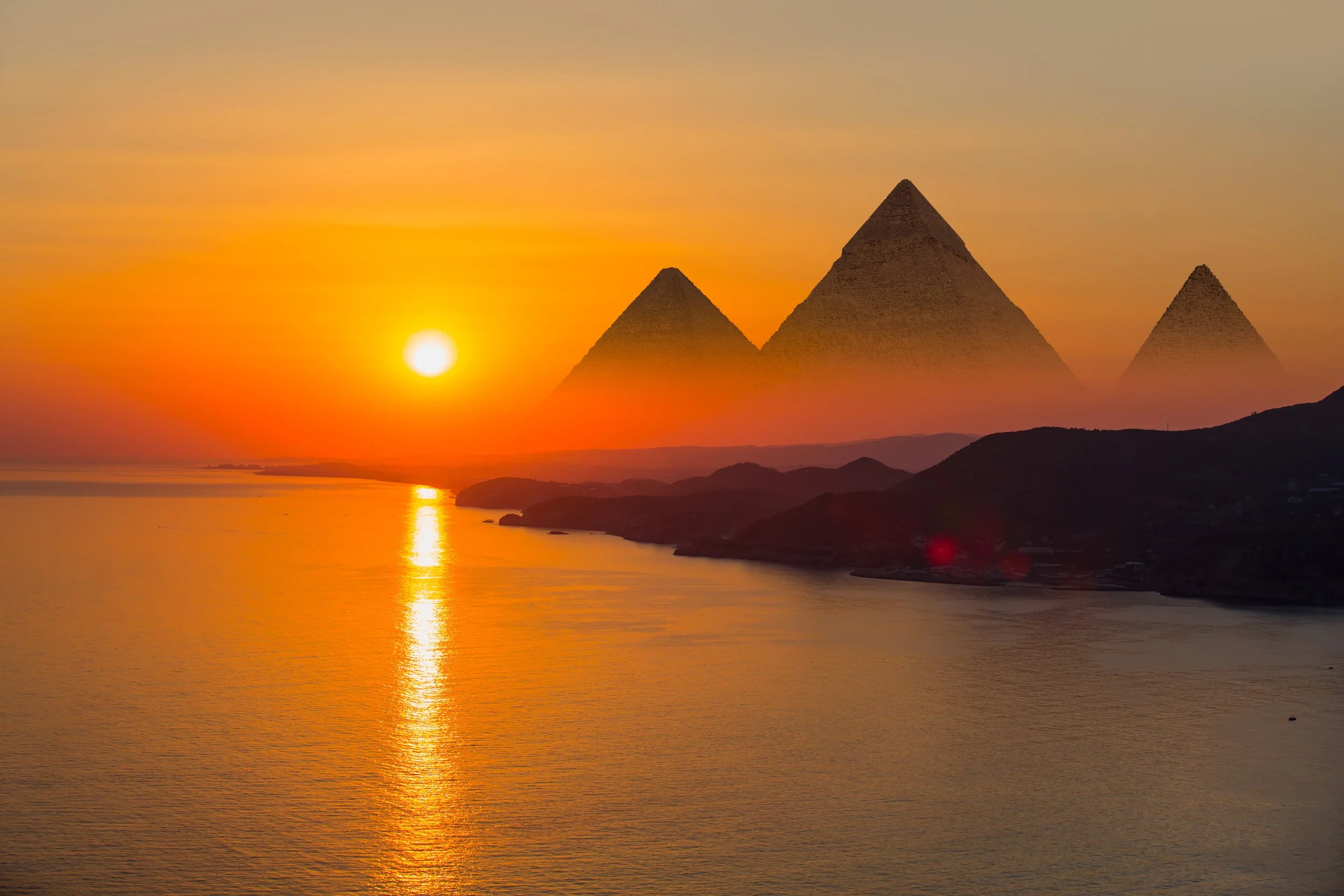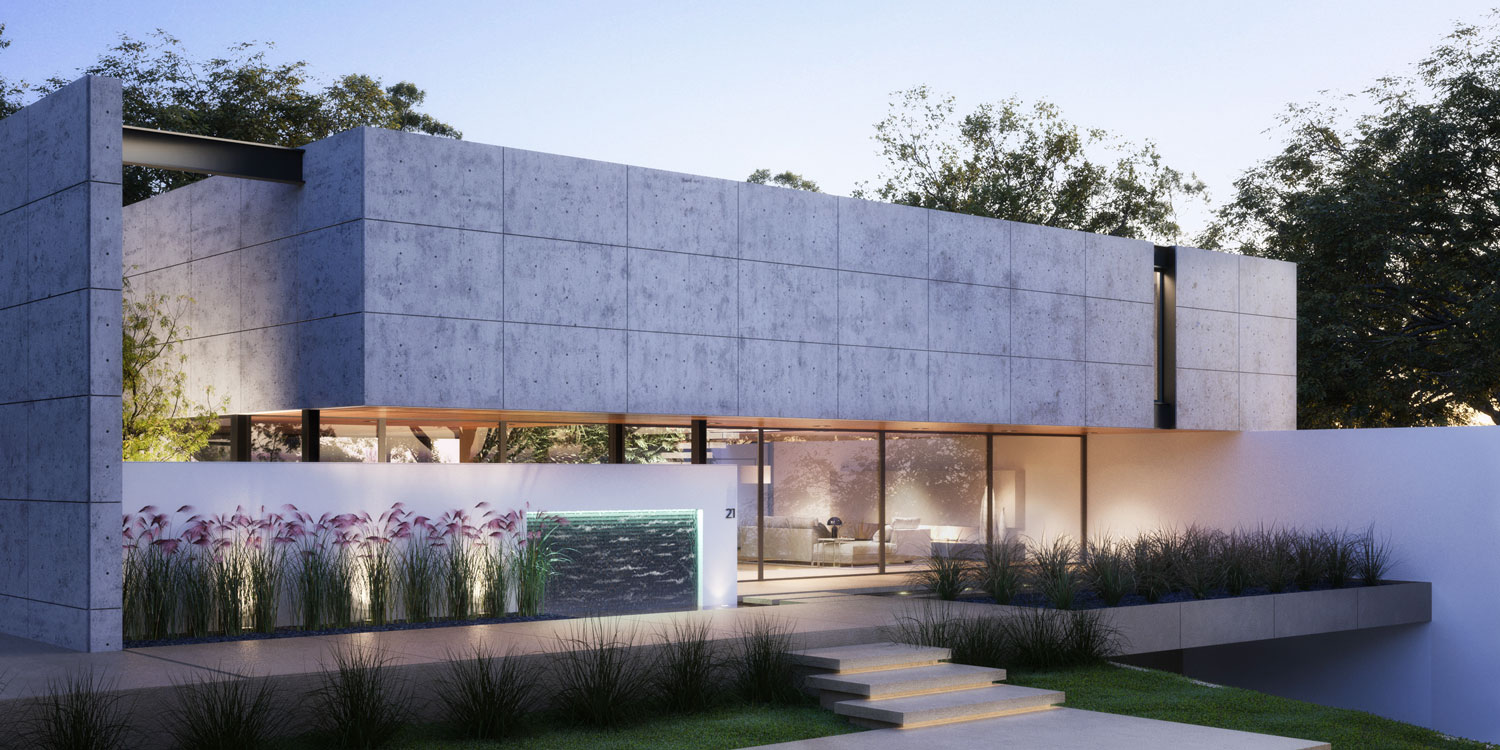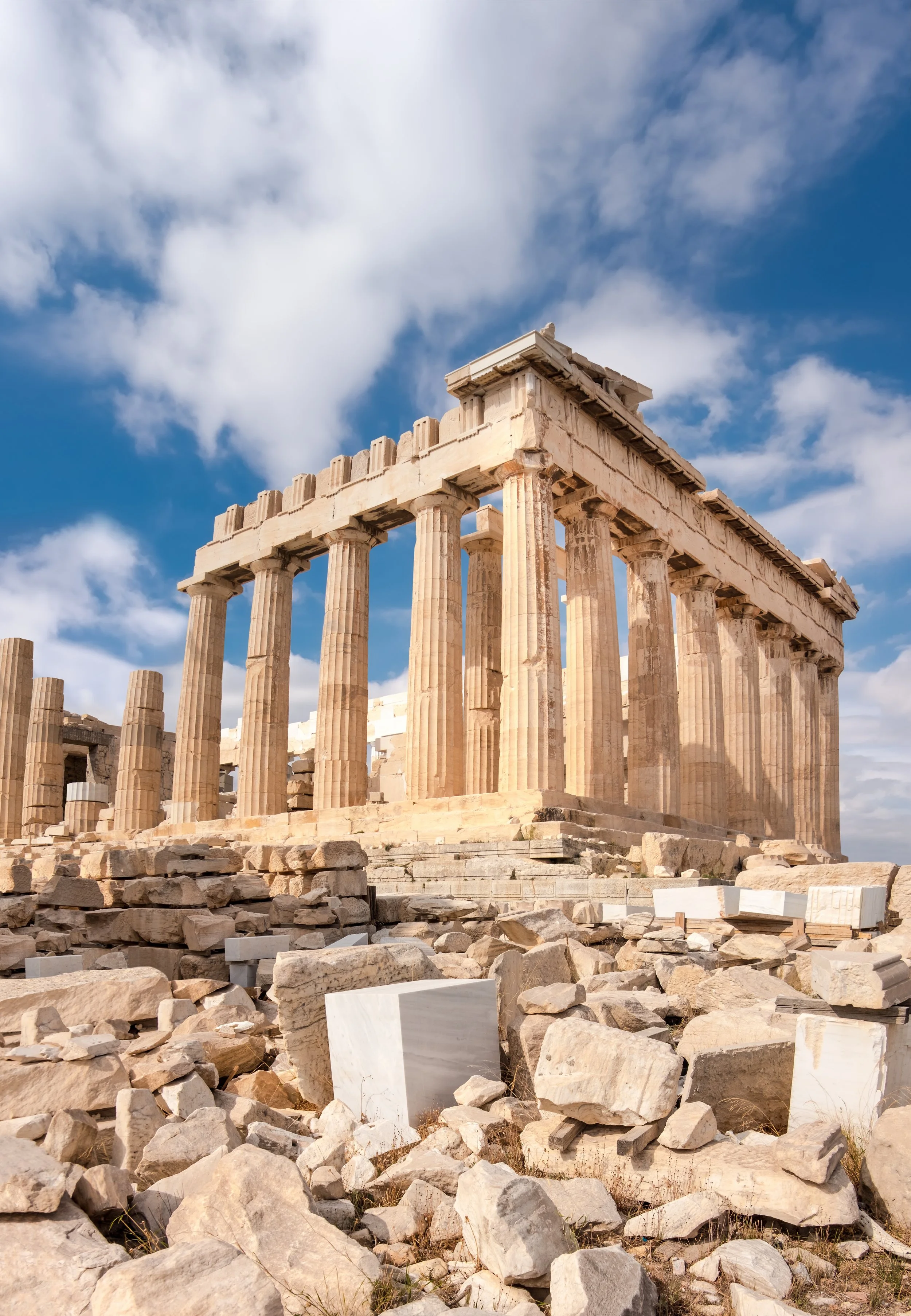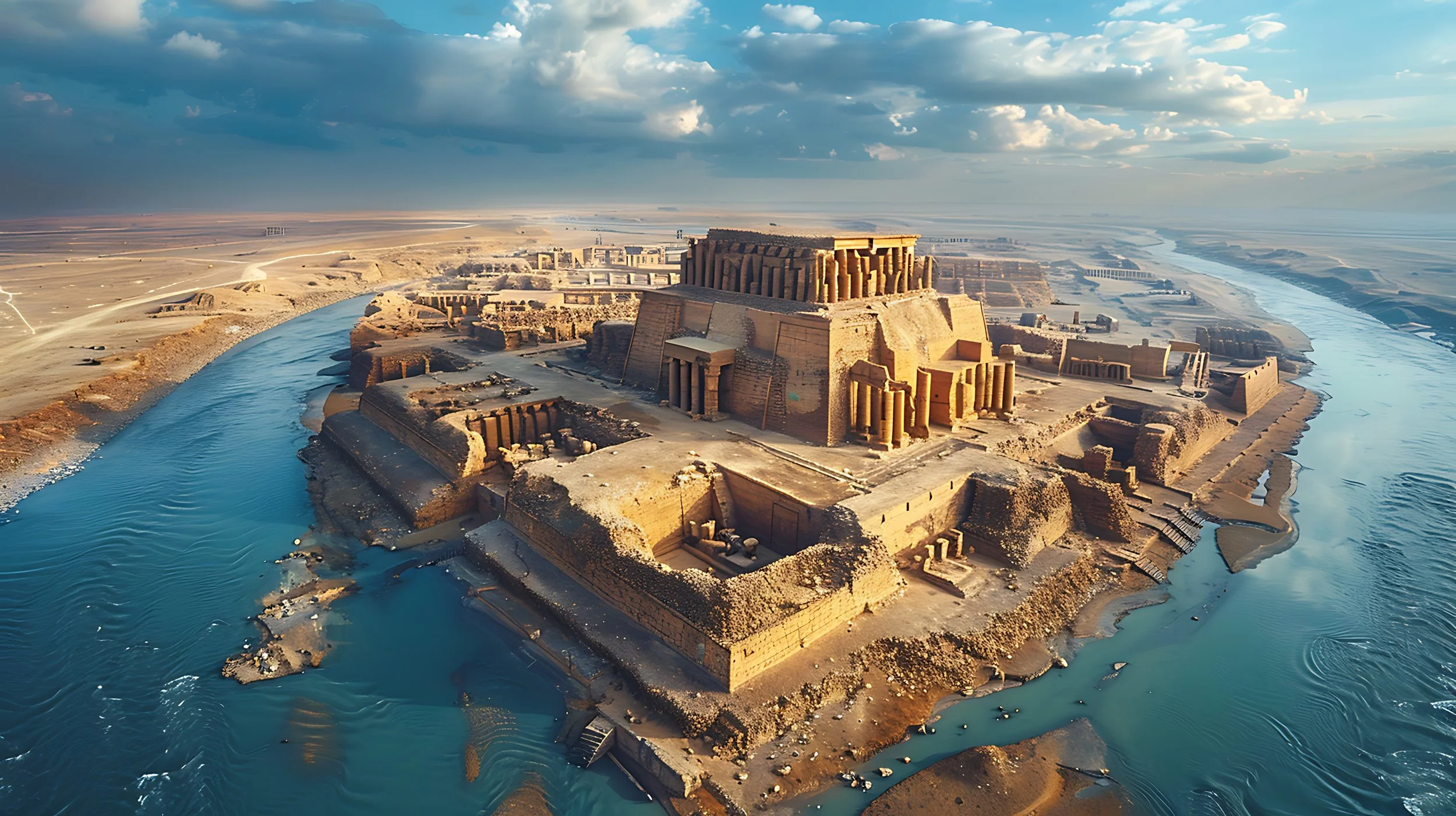Learning from Ancient Egyptian Architecture | The Great Pyramid at Giza
Introduction
Shrouded in mystery, the pyramids are a captivating enigma calling us to unravel their secrets. Built over 4,500 years ago, they're one of the best-known manifestations of a civilization's belief systems in the built physical environment. The Egyptians had a distinct perspective on human existence and the afterlife that was reflected in their architecture. Although we still lack a complete picture of many of the aspects of their civilization, we're slowly uncovering more information, specifically related to their architecture. Studying their architecture can help us uncover lost wisdom, insights about human nature, design and engineering techniques, and their views on existence. We have to ask ourselves how the first humans began to settle near the Nile River
Hi, I'm Mitchell Rocheleau. I'm an Architect searching the world to learn more about the buildings and environments that humans have created, from the modern era, all the way back to prehistory. I believe that our buildings reflect the culture and the context of the people who built them, and they can reveal fundamental insights about ourselves. Using architecture as our lens, we can learn more about who we are and where we come from. With this knowledge, we can build environments for our future that will facilitate our thriving and vitality.
Early Egyptian Settlement
Around 7000 years ago, the Sahara Desert was a vast grassland spotted with lakes. About 6000 years ago, this area began to dry up, causing the native people to move southwards towards the sub-Saharan Africa region and east towards the Nile River valley. Around the same time, the alluvial carpet on the edges of the Nile was forming. These fertile deposits of silt and sediment accumulated along the river's edge and created opportune conditions for agriculture and laid the foundations for a thriving civilization.
Archaeology from that time shows evidence of human settlement along the Nile River, specifically in the narrowest areas of the river. However, as the Nile grows and expands in width, especially in areas where the floodplain becomes wider, traces of human settlement are limited. In these narrow sections, we begin to see the first signs of a germinating Egyptian civilization.
The Nile
Many great cities and works of architecture throughout history, the Pyramids were built near water. Today, they exist in a barren landscape foreign to what it would have looked like when they were initially conceived. However, the construction of the Pyramids was able to occur primarily due to the river as the Giza Plateau and its surrounding settlement would have been a vibrant river settlement. Bettany Hughes describes the pyramids as a riverside attraction.
The Nile River's annual flooding has established life's rhythm and pulse for millennia. The floods deposited fresh sediment and silt that were optimal for farming. The riverbanks of the Nile teemed with lush vegetation and wildlife; These swampy banks foster an ideal environment for the papyrus plant to thrive.
Papyrus
Papyrus became an essential plant for the Egyptians. It was used in construction, shipbuilding, home goods, and numerous other applications. One of the most important uses for the prolific plant was as a medium for writing. The plant allowed early Egyptians to begin exploring the written word and documenting the activities of their lives.
Other larger species of trees and vegetation on the banks of the Nile were cultivated and used as fuel for cooking, baking, processing copper, and making masonry mortar. Large quantities of ash were discovered in excavations around the pyramid building sites, suggesting that the ancient Egyptians used massive quantities of natural acacia trees to fuel their civilization.
Predecessors to the Great Pyramid
In pre-dynastic times, around 3100 BCE, early Egyptian rulers built their burial structures called mastabas. They were common in the First Dynastic Period and primarily constructed from mud brick. They were typically rectangular in plan, containing multiple rooms covered by a flat or gently pitched roof structure, and typically had a slight slope to the exterior walls. Some had qualities similar to those in ancient temples in Mesopotamia, such as the niches on those exterior walls.
The burial grounds were moved north to Saqqara around 2800 BCE. These early burials built at Saqqara began experimenting with pyramidal shapes and underground tunneling. Early Egyptian forms of the pyramid began with the Step Pyramid, which was constructed for a king named Djoser of the Third Dynasty. The Step Pyramid was innovative for Egyptian civilization, prompting many historians and archeologists to search for more direct influences. Many believe there's a direct influence from the ancient ziggurats in Mesopotamia, as it seems that trade and exchange of ideas had been established by the two civilizations at the time. The stepped pyramid of Djoser marked a shift in Egyptian architecture. This pyramid would serve as the prototype for centuries of Egyptian pyramid building.
In the Fourth Dynasty, King Sneferu, which was Khufu's father, ordered the construction of a pyramid with taller, more slender proportions and a steeper slope. When the builders realized significant structural issues due to the height and slopes, the base footprint was increased and expanded, widening the pyramid at its base to support the additional loads. The slope of the remaining portion of the pyramid was also adjusted to help reduce the height, resulting in a clear line on the silhouette which bends inward and begins to form a more gradual slope to the top. This pyramid is referred to as the Bent Pyramid.
As a boy growing up, Khufu, son of snafu, would have seen this failure, which would most likely have a profound impact on him. When Khufu came to power, he could amend this failure with his own tomb and pyramid construction. The stage was set for him. The construction techniques had been refined, engineering tested, and administration organization had been established. Now it was his time to order the construction of the Great Pyramid.
Why the Giza Plateau
One of the main reasons the Royal House decided to move to the Giza Plateau was the natural topography, site conditions, and geology of the area. The temple projects constructed for Sneferu learned many valuable lessons through the challenges and failures of his pyramids.
The Giza Plateau has certain functional and symbolic qualities that attracted the Egyptians. They undoubtedly examined the area before selecting it as the site for the pyramid and found that it was made up of a large limestone bedrock plate. Today we call that plate the Moqattam Formation. The Moqattam Formation is composed of sedimentary deposits on a prehistoric sea floor that accumulated tens of millions of years ago.
It's composed of small fossils that were an extinct type of plankton organism. This sedimentary limestone makes up a large portion of the stone the Egyptians used to construct the pyramids. It's also the stone from which the sphinx is carved. the bedrock foundation would provide the perfect base for Khufu's new pyramid.
The Moqattam Formation had a gentle slope and was unbroken by major gullies or fissures. It contained a variety of softer and harder limestones that were suitable for different types of construction. At the foot of the plateau lies the Nile flood basin on the valley floor. This location would be optimal for creating a harbor where boats and ships could transport materials by water to the site of the pyramids.
There's a gradual slope from the riverbank up to the top of the plateau. The layout of the three pyramids on the plateau suggests a relatively advanced awareness and knowledge of geological principles and site planning. The three pyramids are located along the plateau’s “strike”. A strike is a geological term for a location perpendicular to the direction of a slope when you walk along the edge of the hill without traveling up or down the slope. This ensured that the three pyramids were built relatively around the same elevation.
Before building the pyramids, the Egyptians studied and understood the site's geological features and qualities. They were instinctive planners, demonstrating knowledge and expertise in their decision-making, likely due to the previous generation's history of failures and trial and error.
The pyramid sits on the western side of the Nile River. The setting, western sun, backlights the pyramids, casting an awe-inspiring silhouette. The Giza Plateau is naturally raised above the surrounding landscape, making the pyramids visible from long distances away. This would have been an important site planning consideration for the builders and the kings.
Khufu
The Great Pyramid was built for King Khufu. The two other pyramids on the Giza plateau were built for Khufu's son Khafre and the third for his grandson Menkaure. To understand Khufu's Great Pyramid, we need to understand the man who ordered its construction. His psychology, belief systems, and ambitions were the driving forces behind the work of architecture that we call the pyramid today.
Unfortunately, we know very little about Khufu. It's almost ironic that we have so little information about the patron of one of the world's largest ancient wonders. All we have today depicting Khufu is a tiny ivory sculpture about three inches tall. However, we know that King Khufu appears to be the first Egyptian King to present himself as a deity, which would have been critical in assembling such a large and sustainable workforce.
Who Built the Pyramids
How did the Fourth Dynasty organize Egyptian society to build the pyramids? We don't know for sure. However, there's evidence that the pharaohs began to restructure Egypt between the Third and the Fourth dynasties. They created administrative districts called Nomes, organizing and registering each settlement in their territory. Some believe that during this restructuring, the Pharaohs leveraged them to come to Giza to work on the pyramids. There may have been some degree of force or coercion. However, it may also have been attractive to the people as a source of food, protection, and lodging. These were all provided to the people working on the pyramids. It may have also been seen as a tradition, whereas their duty to participate in the custom of pyramid building. Some have described this as a type of early Feudalism.
There are also clear accounts from the Fourth Dynasty and the Old Kingdom that describe captives from the war being sent to work on the pyramids. Eventually, the captives were integrated into society. However, in this scenario, their work on the Pyramid was enforced, and this was not voluntary.
The Workers Village
Mark Lehner and Zahi Hawass are two of the most prolific archaeologists and historians working at the Giza Plateau. In 1988, they discovered and published their findings of a workers' village. When excavating, they found large bakeries that contained bread pans for baking massive quantities of bread. They found workshops, kitchens, living quarters, and industrial preparation yards. They also found large amounts of animal bones.
The Pyramid Harbors
Another finding by Lehner and Hawass was the presence of man-made canals and dredged harbors at the base of the Giza Plateau. The Egyptians dug these canals and harbors into the earth, allowing the Nile River to fill them so that they could be accessed by boats. This would allow exotic stones not found in the Giza Plateau to be brought to the construction site and used in the Pyramid construction. At the bottom of the old harbor, archeologists found fragments of red granite from Aswan. The granite block seems to have fallen out of the ship into the harbor during transport.
Construction of the Pyramid
The Great Pyramid is constructed of several different layers. At the core of the pyramid are rough-cut limestone blocks filled with packing stones. When it was first constructed, an outer casing of smooth limestone finishing blocks wrapped the entire formation like a skin. These outer casing finish blocks were stripped away during the Middle Ages. When visiting the pyramids today, one will see the outermost core or backing stone layer, but not finished stones. Some finished stones are still existing, but mostly it's at outermost core. The size of the blocks in the inner core varies significantly, and the precision of the masonry work is relatively imprecise. It was not meant to be seen.
The setting stones that make up the body of the pyramid were set using large quantities of mortar. Before the Great Pyramid, previous generations of Egyptian builders used tafla, a natural clay found in the desert.
The builders used gypsum mortar in the Great Pyramid. Gypsum mortar must be heated to create the ash that goes into the mortar mixture, which would have required significant amounts of natural fuel. Nile acacia, as mentioned previously, were harvested from the riverbanks and the surrounding countryside to serve as fuel to create the mortar.
The lack of precision and sloppy infill construction of the Pyramid's core seemed to be acceptable for them at the time. In other areas of the pyramid, those which would have been seen, the builders exhibited extreme accuracy and precision. The base dimensions, slope, and orientation show exceptional degrees of precision even compared to the masonry construction of today.
The massive stone foundation under the Pyramid is one of the most intriguing finds that Mark Lehner and Zahi Hawass discovered. Due to the slope of the limestone bedrock on the Giza Plateau, the Egyptians created a solid level bedrock pad about 16ft tall. That would be the inner core. Many had previously believed that the entire body of the pyramid was made of stacked stone. However, after revealing this bedrock base, our estimates for the amount of stone blocks used in the pyramid have significantly decreased. This bedrock core is stepped and accommodates the lowest four courses of masonry at the base of the pyramid. They've excavated along the Pyramid's western side, exposing the inner stone pad for people to see now.
Inside the Great Pyramid
Inside Khufu's Pyramid, we know of three chambers. There was recently a discovery that seems to have uncovered an additional chamber above the King's chamber. However, the three chambers known to us at the moment are the King's Chamber, the Queen's Chamber, and the Subterranean Chamber. A network of interlinking passages connects these individual spaces. Compared to the pyramids of the past. Khufu attempted to push the boundaries and establish new engineering techniques to create a chamber deeper beneath the Pyramid, and one higher in elevation within the structure. The exact use and purpose of each one of these chambers are still not completely known. There's a lot of discussion and hypotheses about what the uses and purposes for each one of these were for.
One of the Pyramid's most interesting and puzzling features is the small air shafts that exit the King's Chamber and the Queen's Chambers and terminate on the exterior of the Pyramid skin. Archeologists recently sent robots with cameras into these shafts to investigate what was in them. Inside, they found several blocks of stone with small iron pins that seemed to be purposefully placed to block the shaft. Today, there's a lot of speculation about the purpose and the use of these shafts, and what these stones with pins in them were for.
Technical Measurements for the Great Pyramid
This is a 3D print of the site plan of the Giza plateau. This shows Khufu's pyramid Khafre’s pyramid. And then Menkaure's pyramid. Khufu's Pyramid is the largest of the three on the Giza Plateau.
Weighing roughly 6.5 million tons. It's the heaviest work of architecture in the world. The entrance to the Pyramid faces north. The slopes of the sides are nearly a perfect 54 degrees, which is the measurement for all future Pyramids. The Pyramid is 481ft tall, and the limestone blocks that make up the pyramid weigh an average of 2.5 tons each. There are many speculative beliefs behind the pyramids and many different interpretations of what their actual purpose was.
Speculative Beliefs Behind the Pyramids
The Pyramids seem to be constructed as vessels for the journey into the afterlife, and a physical manifestation of a creation myth. Others think the inspiration for the form could have come from seeing rays of sunlight penetrating through the cloudy sky, creating a pyramidal-shaped shaft over the horizon.
When we think about the Pyramid and reflect on it, we must not think of it as a singular, isolated work of architecture, engineering, or an individual monument. It was really a physical manifestation of a concept so deeply embedded in their belief system. It was an edifice that spanned the physical and the supernatural worlds. To the Egyptians, these two worlds were not separate. They were the same. They believed that one could ascend to the sky through the Pyramids. In Ancient Egyptian, the word MER, or Pyramid, can be translated as a place of ascension.
The Temple Complex and Rituals
It's important to note that the pyramids at the Giza Plateau are not freestanding, isolated structures. They're each part of a larger temple complex accompanied by walls, open courtyards, entrance halls, sanctuaries, causeways and a constellation of smaller pyramids. All of these surround each of the three pyramids. Each one of these elements is hypothesized to be part of the ritual or processional process for the royal funeral ceremony. Each architectural element has its own function and symbolic purpose in the process.
One of the most interesting elements are the large causeways or covered walkways that connect the lower valley pyramids to the larger temple complex and larger main three Pyramids up on the plateau. The causeways were enclosed. There are walkways with a roof, containing a series of broad ceiling beams that had a slit down the center that allowed little sliver of light to illuminate the enclosed walkway from above. The causeway ran approximately 825m, or roughly 2,707 ft, from the lower valley temple to the upper temple attached to the Great Pyramid.
The valley temples are gateways to the temple complex and create a dramatic, elongated procession from the valley floor up towards the pyramid.
On the eastern side of each pyramid, there were large temples that were connected to the base of the Pyramid. The causeway connected this temple to the lower valley pyramids. Satellite pyramids were also present at the base of the three larger pyramids.
For example, here. Swaths of large mastaba tombs are located on the east and west sides of the Great Pyramid. These structures are arranged in orthogonal grid patterns aligned to the cardinal directions.
The cluster of mastaba tombs at the Pyramid's base suggests that there was a belief system that proximity and association with the king's tomb would benefit that person in the afterlife.
Wadi al-Jarf
First discovered in 1832, the site of Wadi al-Jarf lay dormant for decades. Rediscovered with excavations resumed in 2011. Archeologists discovered one of the world's most ancient and massive building preparation sites dedicated to constructing Khufu's Great Pyramid.
Current excavations extend nearly three miles along the coast of the Red Sea. At the site, archeologists discovered a manmade cave where they found many tools and papyrus documents. The site was the back office or building material preparation site for the Great Pyramid.
Here they uncovered boats, copper, stone tools, urns to hold food, and vast storage rooms. The papyrus fragments uncovered at the site give accounts of the workers' daily lives. The discoveries at the site are groundbreaking. They give us a more detailed look into the lives of the average Egyptian, not just those of royalty or higher status.
One of the most insightful documents uncovered is the Merer Papyrus. This papyrus was written by a man who managed a crew of 40 workmen and they shipped stone from Wadi al-Jarf to the Giza Plateau on a schedule of three round-trip trips every ten days. Their task was to supply and support the construction of the pyramid.
The papyrus documents at Wadi al-Jarf convey that building the pyramids was an Egypt-wide endeavor. They show that countless teams were organized to gather different raw materials to support the construction of the monument. The teams were well-organized, precise in their documentation, and often competed with each other to finish their tasks.
Sourcing Materials for the Pyramid
Sourcing materials for the pyramid was a massive endeavor. As mentioned, the interior core stone blocks of the Great Pyramid were quarried out of local limestone near the plateau. These quarries are still visible today. However, many of the other materials needed to be sourced from North Africa in the Near East.
The teams gathered Dolerite stone, a hard volcanic stone used for hammering, from the Western Desert. Turquoise and copper mines were established in other areas around the site. Black dolerite was imported to carve sculptures and inscriptions. The white limestone casing stones came from Tura, a small town on the opposite side of the Nile River. The red granite came from Aswan, a city farther south on the Nile River. Different types of wood, such as cedar, juniper, pine, and oak, were sourced and shipped from Lebanon and the eastern Mediterranean, along with a variety of mineral pigments.
When Khufu came to power, control of Egypt was moderately centralized, making controlling resources across his kingdom much easier. International trade and shipping relations were also established, allowing the Egyptians to trade their agricultural resources for gold, copper, and other exotic stones. Egypt was well known for its exquisite art and this commodity was respected in adjacent areas, creating a high demand and trade value for them. These factors gave Egypt significant leverage and power in establishing trade.
Recent Discoveries
New studies, discoveries and theories about the Great Pyramid are on the rise today. Recent discoveries about a new chamber roughly the size of two semi-trucks are being revealed to the public that sit above the King's chamber. Inside the chamber are a variation of hieroglyphic inscriptions that the team studying this hope to decipher.
There also recently been new radar scans that were conducted by Italian and Scottish researchers, claiming the discovery of a massive subterranean structure underneath the pyramid. If proven accurate, this would potentially rewrite the history of ancient Egypt. This is a topic of hot debate today, and many scientists and specialists have questioned the validity, capability, and accuracy of these scans. However, investigations are still underway, and it's important that we keep an open mind to new and developing information.
Conclusion
The construction of the pyramids signifies an ancient Egyptian fascination with and uncertainty about death and reincarnation. Today, 4500 years later, many still grapple with the same question: what happens to us in the afterlife?
The Egyptians built their pyramids and mastabas as vessels to care for the deceased during their journey through the afterlife. They believe that if the King were looked after, the Egyptian civilization would continue to thrive, and future generations of their offspring would continue to be protected. The collective belief in this idea prompted and helped to create a sustainable effort to construct such massive monuments. This is a testament to the power of human belief.
We have tremendous potential when humans gather around a set of beliefs, for better or for worse. The pyramids make me ask what collective human beliefs are in place in our contemporary culture? Are they productive? Do they have a purpose and meaning behind them, or are they hollow, filled with distractions and illusions? Through examining architecture, larger questions such as these can be brought to our awareness. Architecture can prompt us to reflect on our values and beliefs and see if they are serving us or detracting from the essence of what it means to be human.
About ROST Architects:
In addition to practicing architecture, principal and founder of ROST Architects, Mitchell Rocheleau AIA, searches the world to learn more about the buildings and cities humans have created, from the modern era to prehistory. Through writing, expert interviews, and video documentation, we hope to make our journey available and accessible. Our mission is to understand the environments humans have created throughout history, learn from the successes and failures, and contribute to designing a better future.































Notre Dame Cathedral had the power to embed itself into more than just the cityscape. It made its way into the hearts of the people of Paris. When the Cathedral was engulfed in flames on April 15th, 2019, we were reminded that the architecture around us impacts our lives beyond functionality. Principal and Architect of ROST Architects, Mitchell Rocheleau, discusses the history, architecture, and the architectural power of Notre Dame Cathedral.